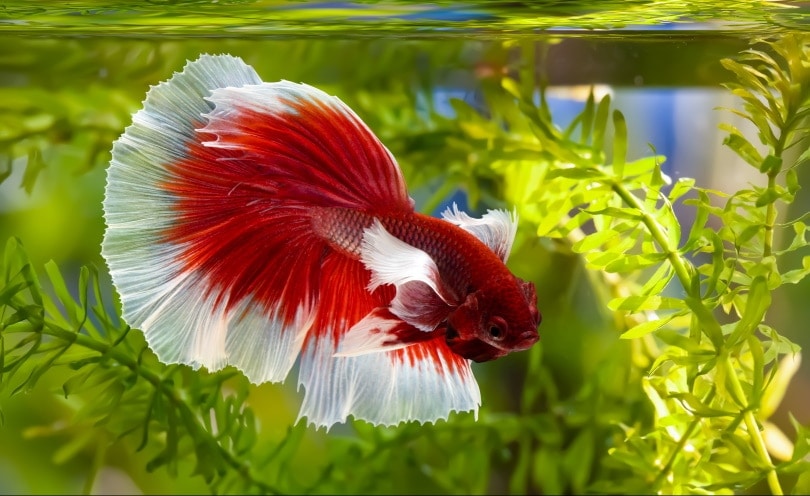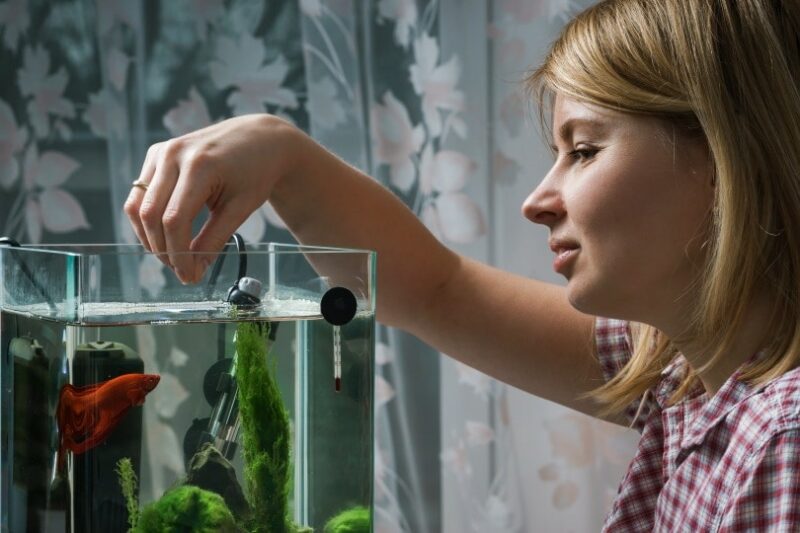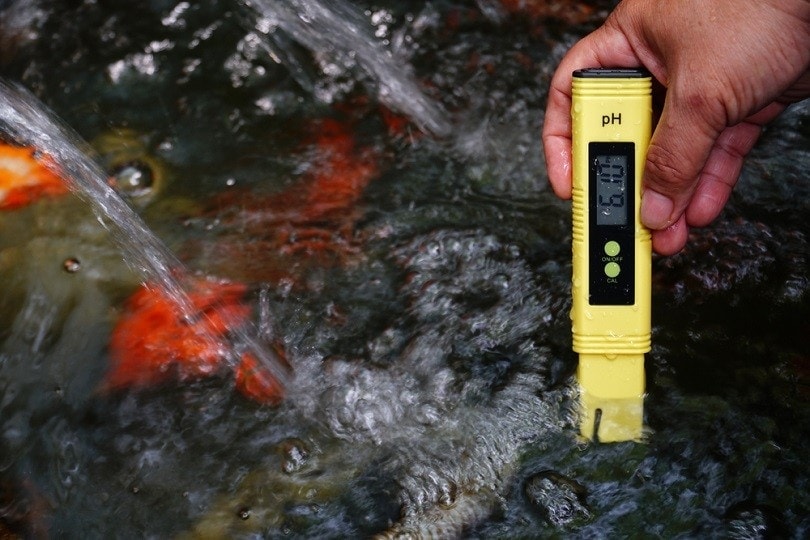Can Two Female Betta Fish Live Together? Vet-Approved Tips & Precautions
Updated on

It is widely known that male betta fish do not get along. They will fight and become extremely territorial with other males. Fortunately, there is an exception, as female bettas can be kept together, provided that they are in an appropriately sized aquarium and in a sorority, which is a group of female bettas. A sorority should ideally consist of five or more female betta fish of similar age and size, introduced into the tank at the same time.
This article will inform you of everything you need to know when it comes to housing two female betta fish together.
Sex Identification (Fins, Color, Size & Behavior)
New betta owners may have trouble distinguishing between a male and a female betta. The easiest way to find out is to ask the breeder you purchase your fish from to identify the sex for you. When purchasing from a pet store, it’s best to get secondary opinions if you’re unsure. Generally speaking, in a pet store, females are housed together, and males are individual containers.
Identifying their sex is essential because you do not want to accidentally put two males together, or even a male and female. Young bettas, which are commonly sold at betta stores, are difficult to identify by sex. They are still small and undeveloped, which can distort the sexually mature features that are tell-tale signs of identifying their sex successfully. When they are 2 or 3 months old, it is easier to identify a betta’s sex.
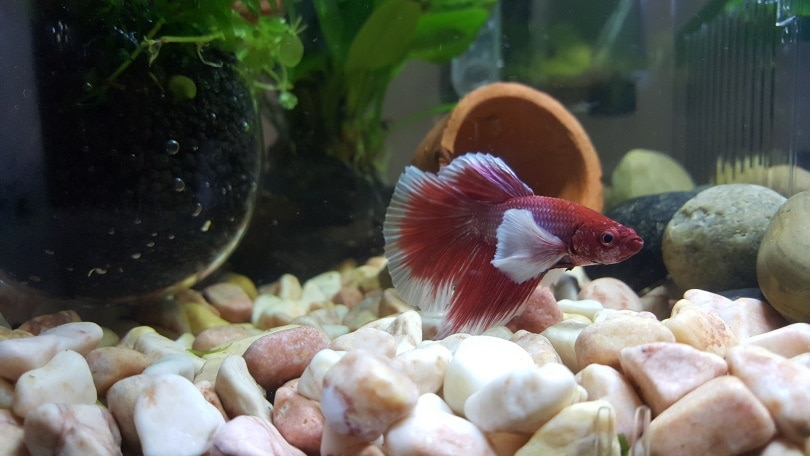
Fins
Male bettas have spectacular finnage that fans out and comprises many colors. It is not unusual for a male betta’s tail fin to grow double the size of the actual body. The ventral and dorsal fins are also long and typically pointed at the ends. There are a few exceptions to this, though, such as the plakat betta. In contrast, the female betta displays short fins that make them better swimmers than their male counterparts.
Coloration
Male bettas have a wider range of vibrant colors than female bettas do. Females will usually display a pattern and solid colors are rare. Koi plakat betta females are a popular coloration and stand out nicely against a planted tank. It is common for female bettas to become more colorful when they are stressed or spawning.
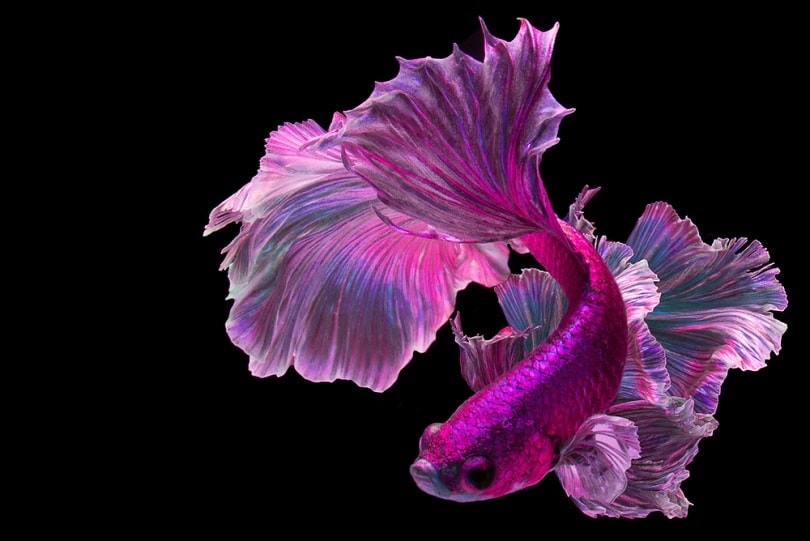
Size and Body
Female bettas have short and thicker bodies than males, which have thinner and sleeker bodies. Female betta fish are typically smaller than males.
Behavior
Female bettas are less aggressive than males, but both sexes flare (the plates near the head extend when the betta is feeling defensive). Male bettas are also the only sex that can build a bubble nest, which looks like small foamy bubbles at the surface of the tank. If your betta is creating bubble nests, they are a male.
The Ovipositor and Betta Beard
All betta fish have what is known as a betta “beard,” which is typically black or brown. This membrane sits below the gills and is easily seen on male bettas. Males have a longer and more noticeable beard than females, and it is constantly visible.
All female bettas have a tiny white dot next to their ventral fin near the head, called an ovipositor. The ovipositor is used to deposit eggs when spawning, and males lack this. Males may have a fake egg spot, but it will disappear as they mature.
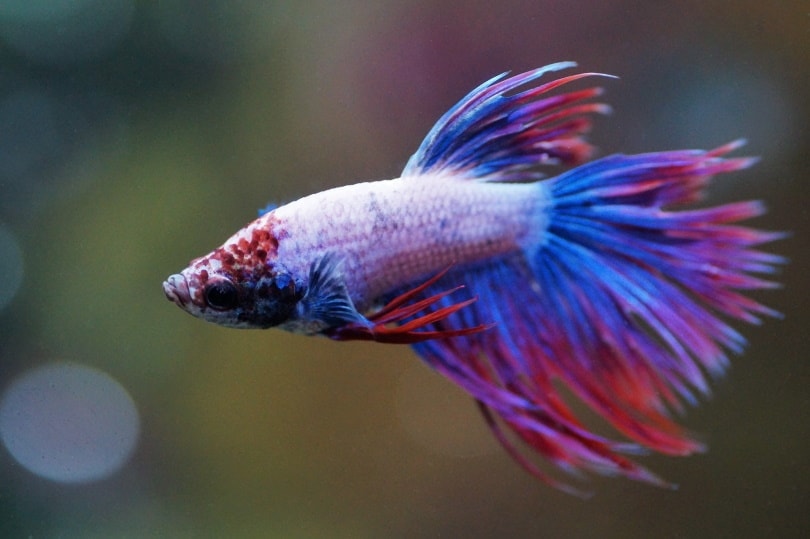
Keeping Female Bettas Together
Successfully keeping female bettas together is not easy and is better suited for experts in the aquarium hobby. A lot of thought and experience goes into creating the perfect sorority tank, and structure is important in case something goes wrong.
To be successful at housing female bettas together, you’ll need a large, well-planted aquarium with plenty of space and hiding spots. The tank should be big enough to comfortably hold at least five females, though sororities can be established with only three females. More females are better, though, provided that the aquarium can accommodate their bioload and individual needs.
The reason it isn’t advisable to put just two female Bettas together is that one will usually dominate the other, and no meaningful hierarchy can be established. The result will likely be a single betta that “rules the roost” and another that is always in hiding and constantly stressed. Multiple females help diffuse this tension and make the hierarchy more “natural.”
In certain circumstances, two females can be housed together in large aquariums, but this is not a common occurrence when it comes to making a sorority.
Tank size is a major factor when it comes to the success or failure of a pair or sorority. These are general guidelines when stocking your betta fish tank:
- 1 female: 5 to 10 gallons
- Pair: 10 to 15 gallons (generally not recommended, should only be attempted by experienced fishkeepers)
- 3 to 5 sorority: 20 gallons
- 6 to 10 sorority: 25 to 40 gallons
Determining If Female Bettas Fight
If you plan to keep more than two bettas together, you will most likely experience a few minor fights and disagreements between the two. Although female bettas are not as territorial or aggressive as males, they are more aggressive than many types of tropical fish regardless of their small size and colorful nature. Bettas have a distinctive personality that varies from fish to fish. This can make it hard to determine how aggressive or peaceful your female betta fish will be after you purchase them. Most female betta fights are caused by the personality of the fish, which is why it is important to have a separation method ready to avoid any serious injuries.
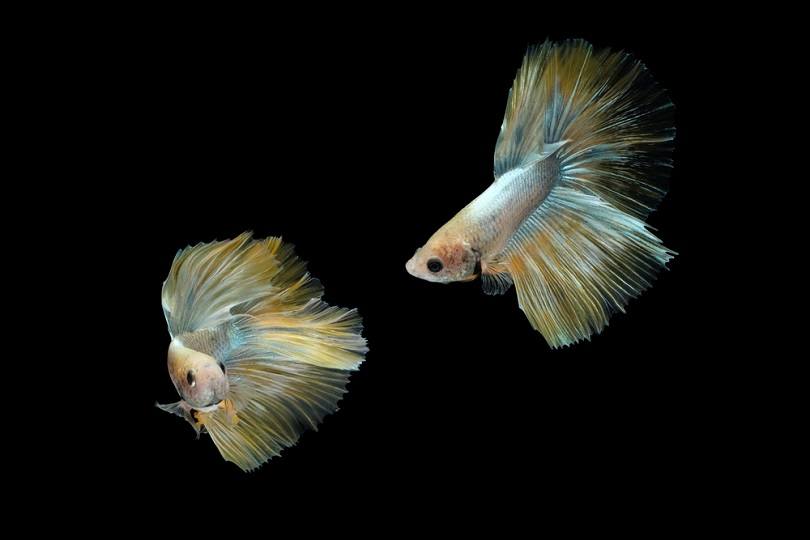
Tank Conditions for a Successful Sorority of Female Bettas
- The size of the tank is what will determine how happy your female bettas will be. The larger the tank, the better and happier the bettas will be. Space can trigger unwanted aggression and fighting, so always choose the largest tank possible.
- Filtration is essential to ensure that the water stays clean and free of debris. Monitoring the parameters will ensure you know the best time to do a water change. The ammonia and nitrite should be 0 parts per million (ppm), and the nitrate should be below 20–30 ppm. If the readings are any higher, a tank upgrade and water changes are required. A filter for at least double the number of gallons in the tank is important, but ensure that the current is not too strong. Multiple sponge filters are best for bettas.
- Live planted tanks, safe artificial plants, caves, rocks, and other hiding spots are required to keep betta fish happy. These decorations and ornaments provide natural shelter from tank mates and can act as visual barriers if one of the bettas decides to act up. Live plants also assist by absorbing some of the ammonia that your fish produce, but they do require additional care to ensure that they are healthy (plants that perish can spoil water quality).
- Have an extra 10-gallon tank with a filter and heater ready in case you need to separate some fish.
- A heater is important to avoid fluctuations in temperature and to avoid it dropping too low. Bettas are tropical fish and are not tolerant of cold water.
Conclusion
If done right, a pair of female bettas can work out, but housing just two female bettas together generally isn’t advised. For the best results, house at least five or more females together in a reasonably sized aquarium with adequate lighting, filtration, and hiding spots to form a sorority. These sororities are most successful when all the females are added to the aquarium together, so cycling the tank before adding them in is critical to avoid an ammonia spike in your aquarium.
Featured Image Credit: Arunee Rodloy, Shutterstock



